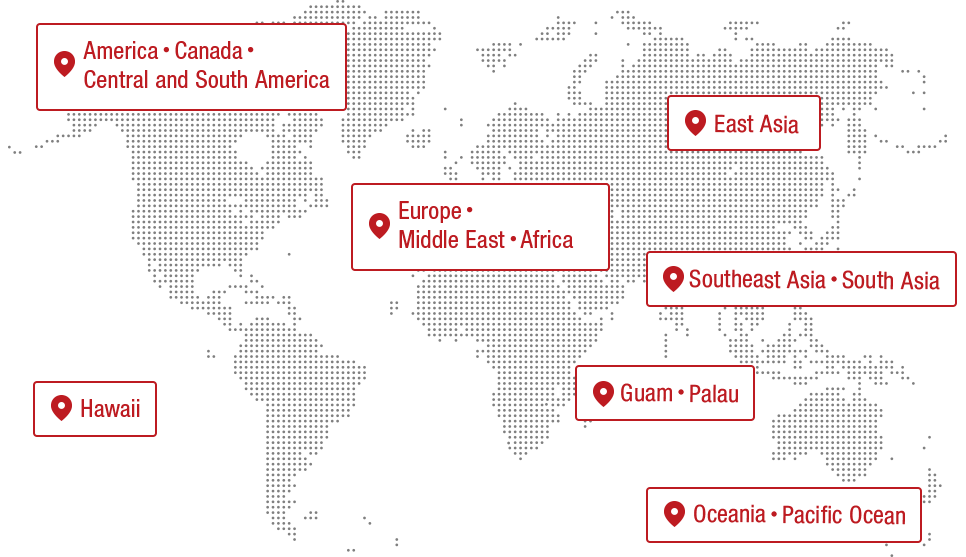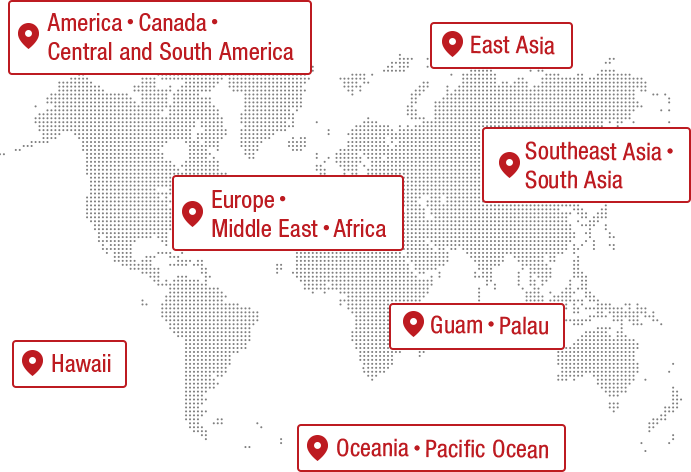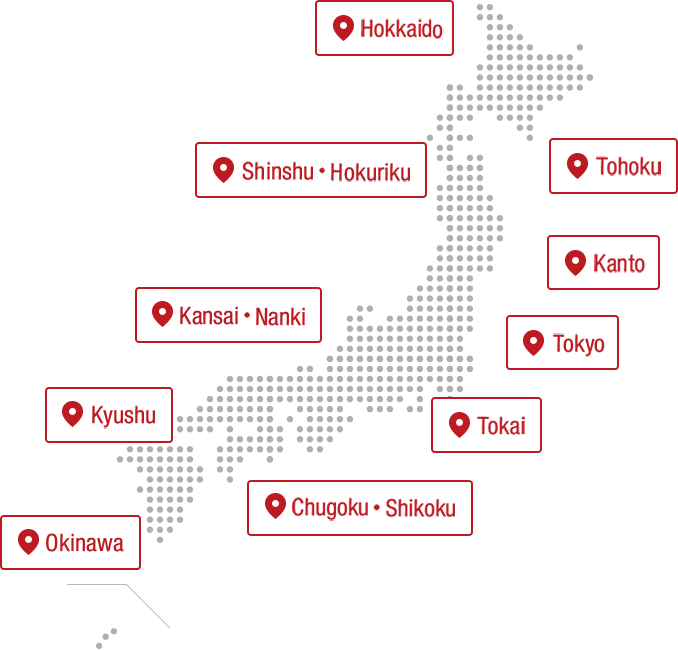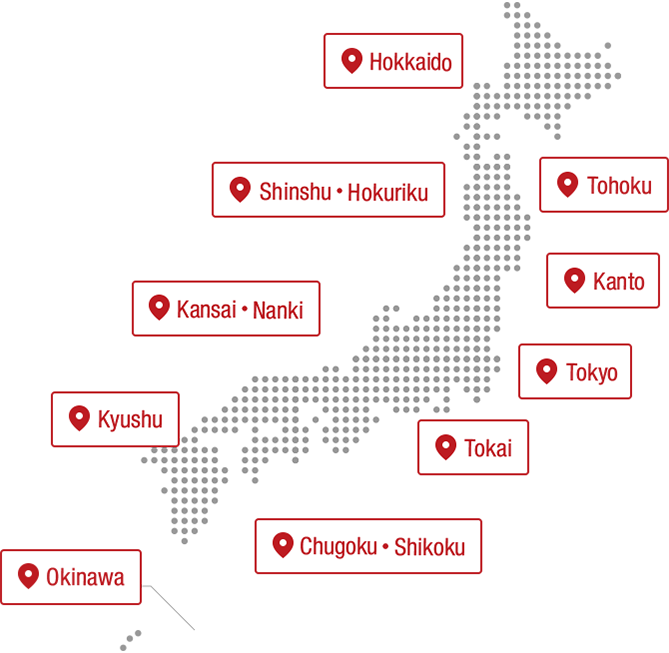To help you discover these unique Easter sweets, we will take you on a journey across four countries. Our guide will be Sweets Nakano, a comedian who makes people happy with sweets.

Sweets Nakano
Born in Tokyo. After graduating from Waseda University, he joined Yoshimoto Kogyo. He taught himself sweets, which he had loved since childhood, and is active as a one-of-a-kind sweets comedian with his trademark pancake hat. He has eaten over 10,000 types of Japanese and Western sweets from a wide range of genres, from long-established shops to convenience stores, and has appeared on many TV programs such as "Hayashi Sensei's First Time Hearing" and "Meringue no Kimochi" with his solid knowledge and information. He is active in a wide range of genres, including planning events at Seibu Shibuya and launching products supervised by the government.
Welcome sweets!
This is Sweets Nakano, the sweets comedian!

Easter is a festival celebrating the resurrection of Jesus Christ. It has slowly made its way into the Japanese sweets world, but the image that comes to mind for most people is probably cute egg- or bunny-shaped sweets.
In fact, there are many Easter-related sweets, mainly produced in Europe, and the sheer variety is surprising.
This time, we will select sweets from four countries and explain the connection and history between Easter and sweets. We will also introduce Japanese stores that sell Easter sweets, so please be sure to visit them someday!
Semla, a sweet that heralds the arrival of spring
"Semla" is known as a sweet that heralds the arrival of spring in Sweden. It looks like a cream puff, but it is classified as a bread. It is made of sweet bread dough flavored with cardamom, sandwiched between almond paste called mandelmassa and whipped cream. Cardamom is not very familiar to Japanese people, but it is often used in cooking in Sweden and is a spice that is popular in households.

Every year in January, many shops start making semla, and many different variations of semla, including chocolate flavor, are lined up. The local newspaper even ran a feature on "What was the best thing about this year's semla?", which shows how much semla is loved.
The reason why people started eating semla at this time of year comes from the fasting period before Easter. Fasting started 46 days before Easter, and semla was a treat eaten the day before the fast. Today, only the custom of eating semla remains, and it is loved as a winter sweet.
Places to eat semla in Tokyo:
Fikafabriken

FIKAFABRIKEN is a Scandinavian sweets specialty store located a short walk from Gotokuji Station in Setagaya, Tokyo. The store has a stylish and warm atmosphere. The owner, Mr. Sekiguchi, who has experience living in Sweden, creates a wide variety of Scandinavian sweets, from the popular cinnamon roll to fresh and baked goods.

Fika Fabriken's semla has a cute appearance, like a hat. You can't see it from the outside, but underneath the whipped cream is a generous amount of homemade almond cream. It's more satisfying than it looks. They use cardamom ground from seeds, and the aroma is carefully selected to create a nice sweet taste!

For Sekiguchi, semla is one of the sweets he has a strong attachment to, as he first tried it while studying abroad in Sweden and even made it with friends from his time there. It has been a popular item since the shop first opened, and more and more customers are coming in just for the semla. Once you try it, you'll be hooked!
FIKAFABRIKEN
| address | : | 1-22-3 Gotokuji, Setagaya-ku, Tokyo |
|---|---|---|
| web | : | https://fikafabriken.jp/ |
Simnel cake, a traditional Mother's Day treat
When you think of Easter in the UK, you think of "Simnel cake." It is characterized by a cake made with dried fruits and spices, decorated with browned dumpling-shaped marzipan (a sweet made of almonds and sugar). If you count these marzipan pieces, you will find that there are 11 of them. This is said to represent the "11" apostles, excluding Judas, who betrayed Jesus, from the 12 disciples of Jesus Christ.

Mother's Day in the UK is also closely linked to Easter. The Sunday three weeks before Easter is called "Mothering Sunday" and celebrated every year. Around the 17th century, girls who left their parents to work as servants were allowed to return home on Mothering Sunday. Simnel cake was baked and brought home as a token of gratitude to their mothers during these trips. For this reason, Simnel cake is also known as a traditional Mother's Day sweet, and it is said that this is the origin of Mother's Day.
Places in Tokyo where you can get Simnel Cake:
Lazy Daisy Bakery

Lazy Daisy Bakery is a British sweets shop in Yushima, Tokyo. Traditional British and local sweets are lined up on cute antique-style plates, and the inside of the small shop is like a toy box. The owner, Nakayama-san, is careful not to "cross the line" when making sweets, and he values the discernment of not losing the "characteristics" of traditional and local sweets.

Lazy Daisy Bakery's Simnel Cake is made with the desire to "cherish the gorgeous and traditional taste of special occasion sweets." Currant and sultana raisins, lemon and orange peels, and griotte cherry confit are carefully marinated in orange juice and brandy. The dough is baked after mixing in an original blend of several spices.

The cute-sized Simnel Cake decorated with three pieces of marzipan makes a nice sweet gift! Lazy Daisy Bakery has a wide selection of warm sweets that you'll want to share with someone.
Lazy Daisy Bakery
| address | : | 2-5-17 Yushima, Bunkyo-ku, Tokyo |
|---|---|---|
| web | : | https://twitter.com/lazydaisybakery |
"Anjou Pascal" with its impressive sheep shape
Agneau Pascal is a traditional sweet eaten during Easter in the Alsace region of France. It is a cute sheep-shaped baked confectionery. Agneau means "sheep" and Pascal means "Easter." There are various theories about the origin of the sheep, including the fact that Jesus Christ was called "God's Lamb" and the custom of eating a lamb as a sacrifice during the Jewish Passover festival.

Agneaux Pascal is a simple treat made with fluffy biscuit dough, made with lots of eggs and sprinkled with powdered sugar. It is decorated in a variety of ways, such as with the red and white flag of Alsace or the yellow and white flag of the Vatican, or with a ribbon tied around the neck.
What I'm curious about is how on earth they bake it into such a beautiful sheep shape? In fact, Agneaux Pascal is baked in a special lamb-shaped pottery. The village of Soufflenheim in Alsace is famous for its traditional pottery made from red clay, and molds for baked goods such as kougelhopf are also made here. Alsace has a deep connection with sweets, so I would like to visit it someday.
Places to eat Agneault Pascal in Tokyo:
Leconte

Founded in 1968, A.Lecomte is a long-established store that is said to be Japan's first French pastry specialty store, and it's one of my favorite stores.
*All Lecomte stores will close in August 2022.

Lecomte's Agneault Pascal follows traditional tastes, adding lemon zest to basic ingredients such as flour, sugar, eggs, and butter, and baking it until fluffy. The simple yet gentle and deep flavor of the biscuit dough makes for a lovely sweet! The molds are handmade ceramics by artisans in the village of Soufflenheim in the Alsace region of France. Each one is a traditional item that is handmade one by one.

Lecomte began selling Agneault Pascal several years ago after receiving a request from a company that deals with European fashion brands. Easter is a very important event in Europe. The company requested that they present the traditional sweets as a token of their appreciation and gratitude to the staff of each store. In response to this request, the company ordered the molds and made the sweets, which have since been sold in stores. They are gentle sweets that can only be found at this time of year.
A.Lecomte Hiroo Main Store
| address | : | 5-16-13 Minamiazabu, Minato-ku, Tokyo |
|---|---|---|
| phone | : | 03-3447-7600 |
| web | : | https://a-lecomte.com/ |
"Colomba" features a dove motif, a symbol of peace
As Easter approaches, the large sweet bread "Colomba" is always available at Italian bakeries, cake shops, and supermarkets. It is made by mixing fruit peels such as orange into a sweet brioche-like dough and baking it with sugar sprinkled on top.

It has a similar taste to panettone, and is generally large enough to be cut and eaten. It looks like a cross, but this is due to the motif of a dove with its wings spread. Colomba means "dove" in Italian, and it is said that this shape was chosen because the dove is a symbol of resurrection and peace in Italy.
There are various theories about its origin, but the oldest legend dates back to 572 AD. A confectioner living in Pavia, Lombardy, offered a dove-shaped loaf of bread as a symbol of peace to the invading Lombard king. Perhaps related to this story, Colomba is still made in large quantities in Lombardy, mainly in Milan, today.
Places where you can eat Colomba in Japan:
Donk

Donq Sannomiya Main Store
Founded in Kobe in 1905, "DONQ" is an essential store when talking about the history of bread, having started the French bread boom in Japan. The store has been selling Colomba since the 1970s, and it has been a huge bestseller for nearly 50 years.

The dough is based on "Pandoro," an Italian fermented pastry made with butter and eggs, mixed with orange peel, spread with marzapane (a kind of bean paste made from almonds and sugar) on the surface, sprinkled with sugar crackers, and baked. It is a dish that you can enjoy the refreshing aroma and fluffy, gentle sweetness.

The reason why Colomba was sold in the store was that employees had frequently visited European countries since the 1960s to learn about food culture, and had become interested in Italy. In 1975, they invited technicians from Italy and sent Donq's technicians to Italy to receive technical guidance on traditional fermented sweets such as panettone and pandoro, learning authentic know-how. Meanwhile, Donq launched a new brand dealing in Italian bread and fermented sweets, and decided to create Colomba as one of the items to be sold there. Since then, the recipe and appearance have not changed significantly, making it a wonderful sweet with a long history.
*Colomba sales period: Wednesday, March 24, 2021 to Tuesday, April 6, 2021
DONQ
| store information | : | Please refer to the official website for nationwide availability. http://www.donq.co.jp/pc/shop/ |
|---|---|---|
| web | : | http://www.donq.co.jp/pc/ |
What did you think of the Easter sweets from around the world?
This time, we introduced sweets that can be eaten in Japan, but there are many more types of Easter sweets around the world.
Although Easter has a common theme, its association with history and traditions varies from country to country and region to region. It is interesting to compare the stories that have been passed down.
If after reading this article, the sweets spark an interest in the area or make you want to visit someday, then I'll be delighted with these sweets.

*This article was updated in part on August 2, 2022.
The contents published are accurate at the time of publication and are subject to change.











